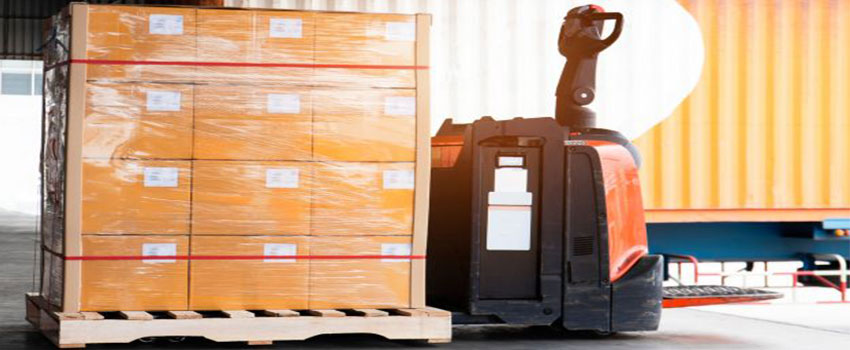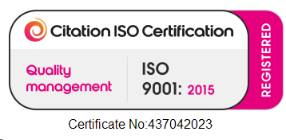Pallet wrapping, a crucial step in the logistics and supply chain process, plays a vital role in ensuring the safety and integrity of goods during transportation and storage. A well-executed pallet wrapping technique provides stability, protection against damage, and minimizes the risk of accidents.
In this blog post, we will explore the significance of pallet wrapping in enhancing safety, examine key considerations for effective wrapping, discuss advanced techniques and materials, and delve into the benefits of incorporating automated systems and load stabilization methods.
Importance of Pallet Wrapping
Pallet wrapping serves as the primary line of defense for goods during transit, safeguarding them against shifting, impacts, and environmental factors. By firmly securing items to the pallet, it minimizes the risk of load collapse, reducing the potential for accidents, injuries, and damage to the products. Proper pallet wrapping also helps prevent theft and tampering, ensuring the integrity of the goods throughout the supply chain.
Considerations for Effective Pallet Wrapping
To achieve optimal safety and stability, several factors must be considered when pallet wrapping. First, the selection of appropriate wrapping materials is crucial. High-quality stretch film or shrink films are commonly used due to their strength, flexibility, and ability to conform to the shape of the load. Additionally, the film thickness should be chosen based on the weight, shape, and fragility of the items being shipped.
Second, attention should be given to the wrapping technique itself. The application of consistent tension is essential to ensure load containment. Under-wrapping can lead to loose or unstable loads, while over-wrapping may cause excessive compression, potentially damaging the products. Achieving the right balance is key.
Furthermore, incorporating corner protection devices, edge protectors, and strapping can provide additional stability and protect vulnerable areas of the load. These measures help distribute the stress evenly and minimize the risk of damage caused by straps cutting into the packaging.
The Power of Pallet Wrapping
Pallet wrapping is a powerful tool for protecting products from damage and keeping them intact throughout shipping and storage. This vital packing technique helps to safeguard goods, prevent damage, and keep supply chain processes running smoothly and efficiently.
Let’s delve into the power of pallet wrapping and explore its various advantages.
Stability and Load Containment
The primary purpose of pallet wrapping is to provide stability and containment for the load. By firmly securing the items to the pallet, it minimizes the risk of load shifting, collapsing, or toppling during transit. This stability ensures that products arrive at their destination in the same condition they were loaded, reducing the chances of damage and minimizing potential losses.
Protection Against External Factors
Pallet wrapping acts as a shield, safeguarding goods against various external factors that can compromise their quality. It protects the contents from external factors like humidity and dirt while blocking out harmful UV rays. It also safeguards against abrasions and light impacts that may occur during transit.
 Enhanced Safety
Enhanced Safety
Properly wrapped pallets contribute to a safer working environment for warehouse personnel, transporters, and end-users. The secure containment of the load reduces the risk of accidents, such as falling objects or unstable loads. By minimizing potential hazards, pallet wrapping helps maintain a safe and accident-free workplace.
Theft Prevention and Tamper Evidence
Pallet wrapping provides a level of protection against theft and tampering. Transparent films allow visual inspection of the load, making it easier to identify any signs of tampering or unauthorized access. Additionally, wrapping with opaque films or incorporating security seals adds an extra layer of security, deterring theft and ensuring the integrity of the products.
Streamlined Handling and Efficiency
Well-wrapped pallets facilitate easier and more efficient handling throughout the supply chain. The contained load allows forklifts or pallet jacks to maneuver smoothly without the risk of items shifting or falling off. This streamlined handling process reduces loading and unloading times, enhances operational efficiency, and minimizes the chances of accidents or delays.
Brand Image and Customer Satisfaction
Pallet wrapping contributes to a positive brand image and customer satisfaction. By ensuring that products arrive in excellent condition, businesses demonstrate their commitment to quality and reliability. Customers appreciate receiving goods that are well-protected and undamaged, leading to increased trust and repeat business.
In conclusion, pallet wrapping holds immense power in the world of logistics and supply chain management. Its ability to provide stability, protect against external factors, enhance safety, prevent theft, streamline handling, and boost customer satisfaction makes it an indispensable part of the packaging process.
By understanding and harnessing the power of pallet wrapping, businesses can ensure the safe and secure transportation of their goods while maintaining a competitive edge in the market.
Tips to Make the Most of Pallet Wrapping
To achieve effective pallet wrapping, several considerations should be taken into account. These factors can greatly impact the safety and stability of the load during transportation and storage. Let’s explore some key considerations:
Load Configuration
Before wrapping, it is essential to properly configure the load on the pallet. Ensuring that the weight is evenly distributed and the items are arranged in a stable manner helps prevent imbalances and potential shifts during transit. Care should be taken to stack items securely, avoiding overhangs or unstable arrangements.
Film Tension and Film Thickness
Achieving the right tension is crucial for load containment. The stretch film should be applied with sufficient tension to hold the load firmly in place without causing excessive compression or damage to the products. Balancing the tension is important to maintain stability while avoiding excessive strain on the packaging materials.
Film Coverage
Proper coverage is essential to protect the load from external elements. The stretch film should fully enclose the load, covering all sides and corners. Ensuring complete coverage helps prevent moisture, dust, and other contaminants from reaching the products, preserving their quality and integrity.
Wrapping Technique
The wrapping technique employed can significantly impact load stability. There are various wrapping patterns available, such as spiral, cross-pattern, or combination wraps. The choice of technique depends on the load characteristics and desired level of stability. It is important to apply the technique consistently throughout the wrapping process.
Corner and Edge Protection
Vulnerable areas of the load, such as corners and edges, are prone to damage during handling and transport. Incorporating corner protection devices and edge protectors provides an additional layer of stability and safeguards against potential damage caused by straps or external forces. These protective measures help distribute the load stress and minimize the risk of product damage.
Strapping and Securing
In some cases, additional strapping or banding may be necessary to further secure the load. Straps can be used in conjunction with pallet wrapping to reinforce stability, particularly for heavy or irregularly shaped items. Properly applied strapping helps prevent load shifting and provides added strength and integrity to the packaging.
By considering these factors and implementing effective pallet wrapping practices, businesses can enhance safety, reduce the risk of product damage, and ensure the successful delivery of goods throughout the supply chain. A well-wrapped pallet provides peace of mind, minimizes the likelihood of accidents or disruptions, and contributes to a reliable and efficient logistics operation.
Summing Up
pallet wrapping is a critical component of the logistics and supply chain process, with the power to enhance safety, protect goods, and optimize operations. Pallet wrapping is not just a routine task but a vital aspect of the supply chain that holds the power to protect, secure, and optimize. By giving due attention to this important step, businesses can ensure the safe and secure transportation of their goods while maintaining a competitive edge in the market.







